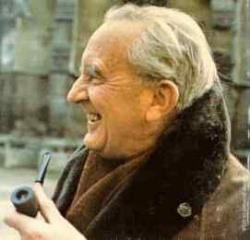Classic Novels and the Road to Immortality (or, Why Twilight is a Passing Fad)
 We all know that some works last, whilst others do not. Books, poems and articles come and go, touching our existence for no more than a minute or two. However, some stories leave an impression, a memory, and a very clear urge to keep it there. Many of us try and recreate the success that this has brought others, and few of us triumph. However, I believe that the true classic, the work of art that lasts through generations, has several key qualities.
We all know that some works last, whilst others do not. Books, poems and articles come and go, touching our existence for no more than a minute or two. However, some stories leave an impression, a memory, and a very clear urge to keep it there. Many of us try and recreate the success that this has brought others, and few of us triumph. However, I believe that the true classic, the work of art that lasts through generations, has several key qualities.
To explain, these qualities do not affect the plot in any way. There is, to my understanding, no “perfect plot” to follow. If anything, originality is the best route. My ideas instead stem from the very message of the story, the way it conveys itself, and the reactions we have. The first of these, tier one, if you will, is the very surface plot, that which is available upon reading to whoever should choose to pick up the book. These are often well calculated by authors in order to provoke the best available reaction from an audience. Consider, taking a modern example, the character of Edward in “Twilight”. This character is designed to be the “perfect boy” in our generation. He provokes a reaction of lust within the intended audience, and thus creates a temporary hit. This alone, however, is not enough to obtain the status of a classic.
The second tier, in my mind, comes on a more subtle and scholarly level. It is the sort of hidden meaning you were made to search for by your English teachers.This hidden second plot often has some relation to an important issue, perhaps an emotion. At its best, these sub-plots work to propound a theme constant, and not relying on the current world. Often a theme of human emotion or suffering serves best to preserve a book throughout time. Alternatively, a perfect snapshot of the times (Orwell’s caption of post-war political views, to snatch an example) can also lead to a classic book, preserving ideas and trains of though otherwise lost to history books. Novels such as these, however, must rely on a powerful tier one, or tier three, as is to come. Joseph Conrad’s Heart of Darkness, for example, relies on its main plot (tier one) whilst also preserving the racial attitudes of his time (tier two). This can also explain how many authors are not at their most successful during their lifetimes.
The final tier I am to consider, tier three, is by far the most controversial. Indeed, it goes very much against the practises of Oscar Wilde, and many romantic writers of his time. It is, however, in my opinion, essential to the continued preservation of a book: the inclusion of a part of the author. To explain, the author should, in the greatest of subtlety, perhaps subconsciously (unless it is the intention of the book at hand), include a very personal quality of himself or herself. Let us examine two fine late authors for this, Tolkein and C.S. Lewis. Tolkein, at the heart of his stories, includes a great desire for history and nature behind the veil of tiers one and two. He also draws upon many childhood experiences, especially in the creation of his monsters. Lewis, as has recently been argued, bases his Narnia Chronicles on the solar system of the mediaeval world (each book representing a planet). Ancient astronomy was a passion and endeavour of his, and it is no surprise to find traces of it behind the plot (tier one) and religious subtleties (tier two). Obviously, finding these third tier ideas is incredibly hard, and most likely only achievable with years of scholarly study of the author in question. Nonetheless, it is with inclusions of ideas such as this that a writer can truly feel passion for their writing, and this can be properly passed on to the reader. In other words, it is a complete combination of all the tiers that brings about a classic novel.
Latest articles
-

Boys
August 1st, 2017 at 05:41pm
-

Will Judith Survive?
May 25th, 2015 at 04:40am
-

Best Summer Movies
May 7th, 2015 at 05:30pm
-

Top Ten Valentine's Day Movies
February 6th, 2015 at 03:21pm
-

A Knight to Remember for Batman?
January 18th, 2015 at 12:54am
